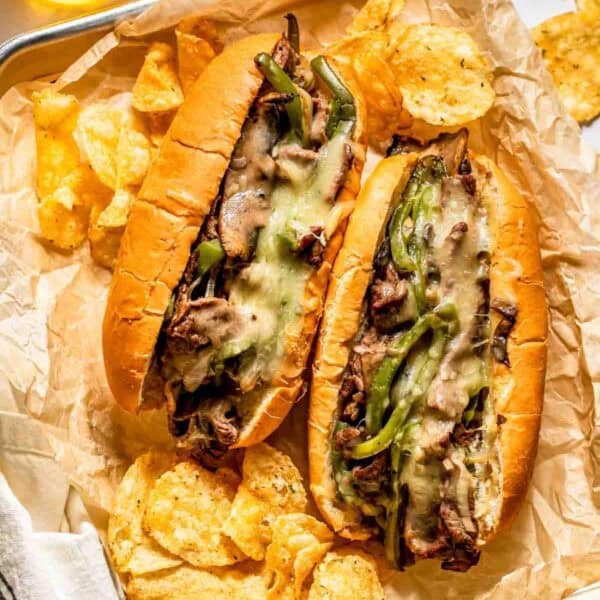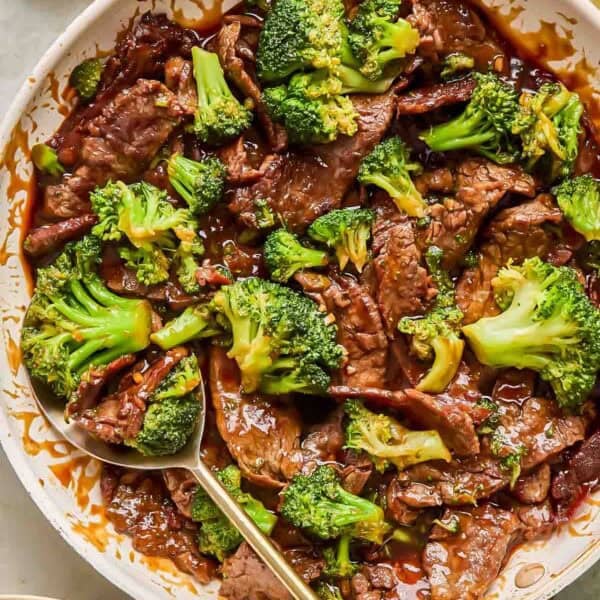This post may contain affiliate links. Please read our disclosure policy.
Pork katsu is a classic Japanese meal that is so quick and easy. 7 ingredients and just 25 minutes to make? What are you waiting for? Give this recipe for pork katsu a try next time you’re craving takeout.
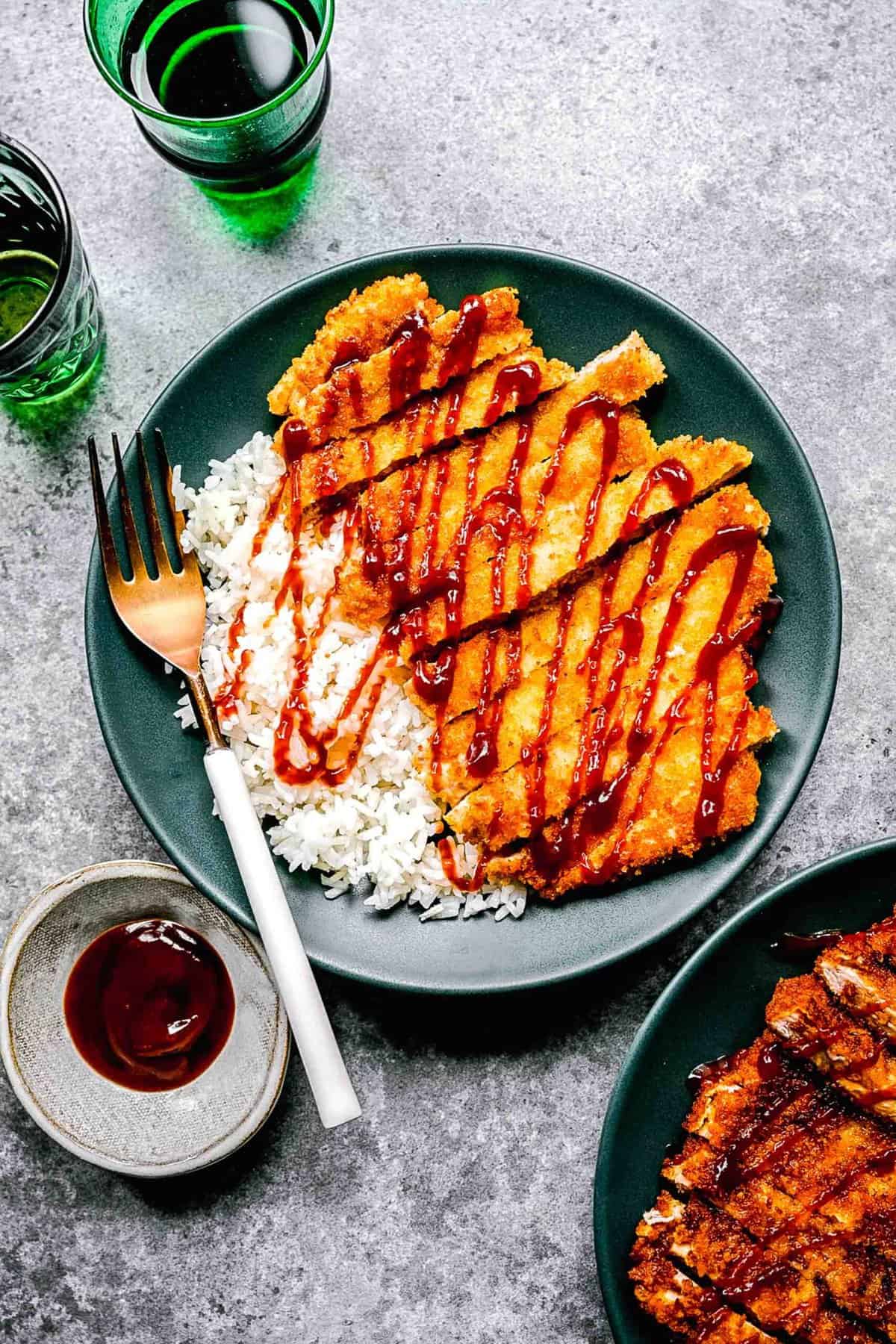
Pork Katsu, or Tonkatsu, is a popular Japanese entree often served over rice with a signature sweet and tangy sauce. It is a savory treat of thinly pounded pork, breaded and shallow fried to a perfect golden brown. It is a go-to for many when ordering Japanese take-out.
Believe it or not, you can easily make it yourself in about 25 minutes. It’s the perfect weeknight meal for those of you juggling a busy schedule but still craving some tasty Japanese soul food. Make it with scallion pancakes, if you like, for a super filling and comforting meal!
Also, if you love this pork tonkatsu, you’re going to want to try this chicken katsu or this chicken katsu curry as well.
Why This Pork Katsu Recipe Works
This pork katsu recipe will become an instant family favorite! Here’s why I think you’ll love it as much as I do:
- Crispy yet tender. The panko breadcrumbs add the perfect level of crunch to this pork, but the meat itself is so tender and juicy.
- Easy to make. Pork katsu is made with just 7 ingredients, most of which are probably in your kitchen/pantry already.
- Super quick. This crispy pork dinner comes together in just 25 minutes. No need to spend all day in the kitchen!
- Adaptable. Most commonly, the Japanese use pork or chicken in katsu recipes. Thus, I also really enjoy making chicken katsu with chicken breasts instead of pork (recipe linked above). Make whichever version you like depending on what kind of meat you currently have!
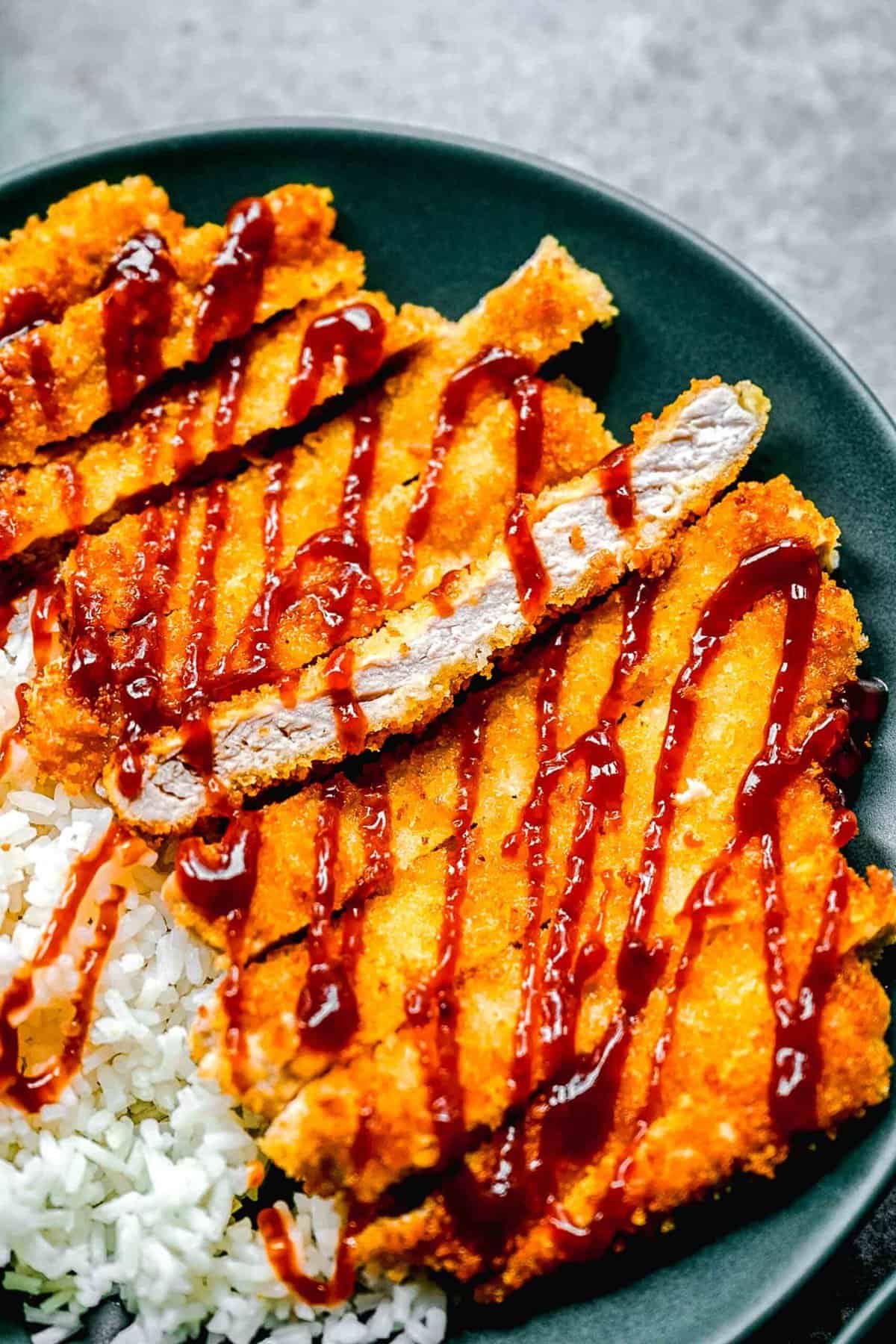
What Is Pork Katsu?
The “katsu” in pork katsu refers to the cooking method used in this recipe. A katsu dish consists of some sort of meat (usually pork or chicken) that has been coated in panko breadcrumbs and fried to crispy perfection. Pork katsu also goes by the name tonkatsu, with “ton” translating to “pork” in Japanese.
Recipe Ingredients
Let’s round up the short list of ingredients you’ll need to make this pork dinner! You can find the exact measurements for each one in the recipe card below.
- Pork – I recommend using boneless pork loin. Other cuts can be too fatty.
- All-Purpose Flour – To seal the outside of the pork so that it stays nice and moist while it cooks.
- Salt – I recommend using kosher salt for this recipe, but table salt can work too.
- Black Pepper – Go for freshly-ground black pepper here.
- Eggs – To ensure that the breadcrumbs stick to the pork.
- Panko Breadcrumbs – I highly recommend using Panko if you can tolerate gluten, but see my notes below for appropriate substitutions.
- Vegetable Oil – Make sure to select a cooking oil with a high smoke point.
Do I Have to Use Panko Breadcrumbs?
In order to maintain the integrity of the dish, I do recommend using Panko. That being said, you can substitute regular breadcrumbs in a pinch. Keep in mind that generic breadcrumbs absorb more oil than panko, so you will have a soggier, greasier pork katsu if you choose to use them. If you are gluten intolerant or following a low carb diet, it is possible to use almond flower in the place of panko. The result will be quite different, but your dietary needs will be taken care of.
How to Make Pork Katsu
It only takes 25 minutes and it’s pretty fun, too! Make sure to scroll to the bottom of this page to view the full instructions in the recipe card, but here’s a quick breakdown on how to do it:
- Tenderize the pork. Put the pork in a plastic bag and, using the flat end of a meat mallet, pound the pork until it is significantly thinner.
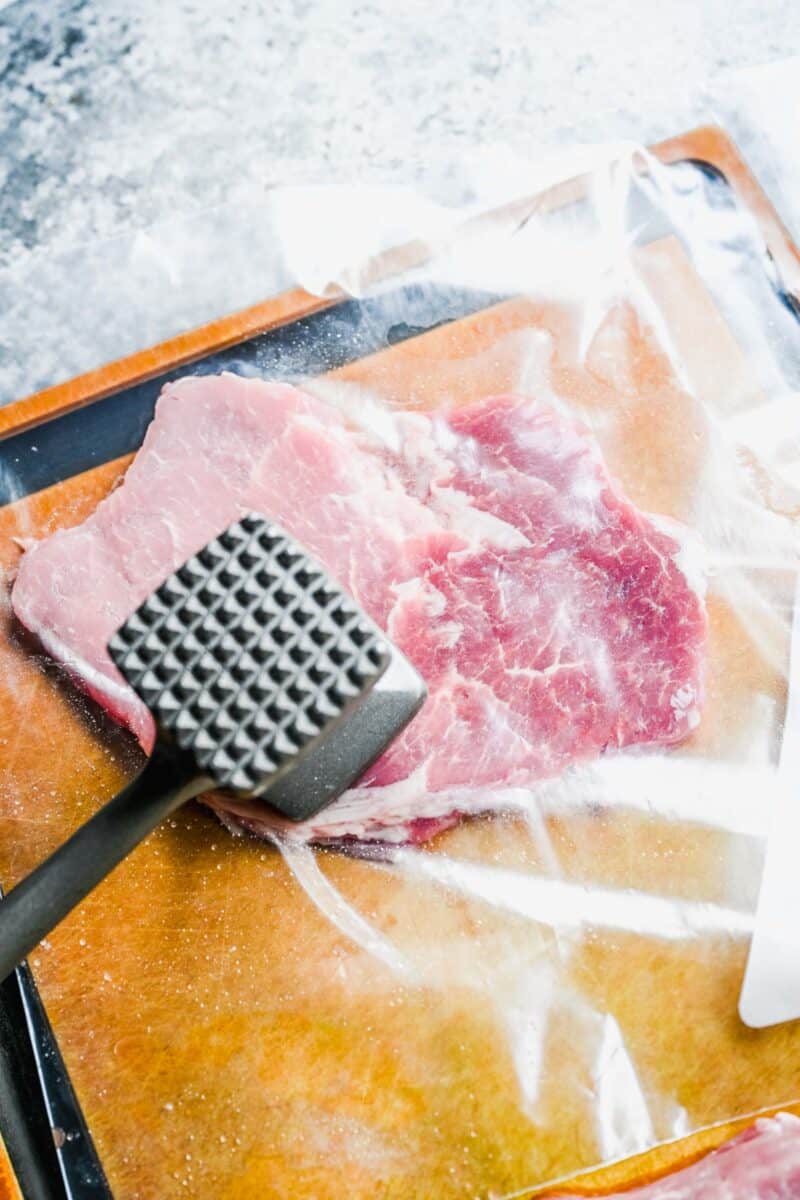
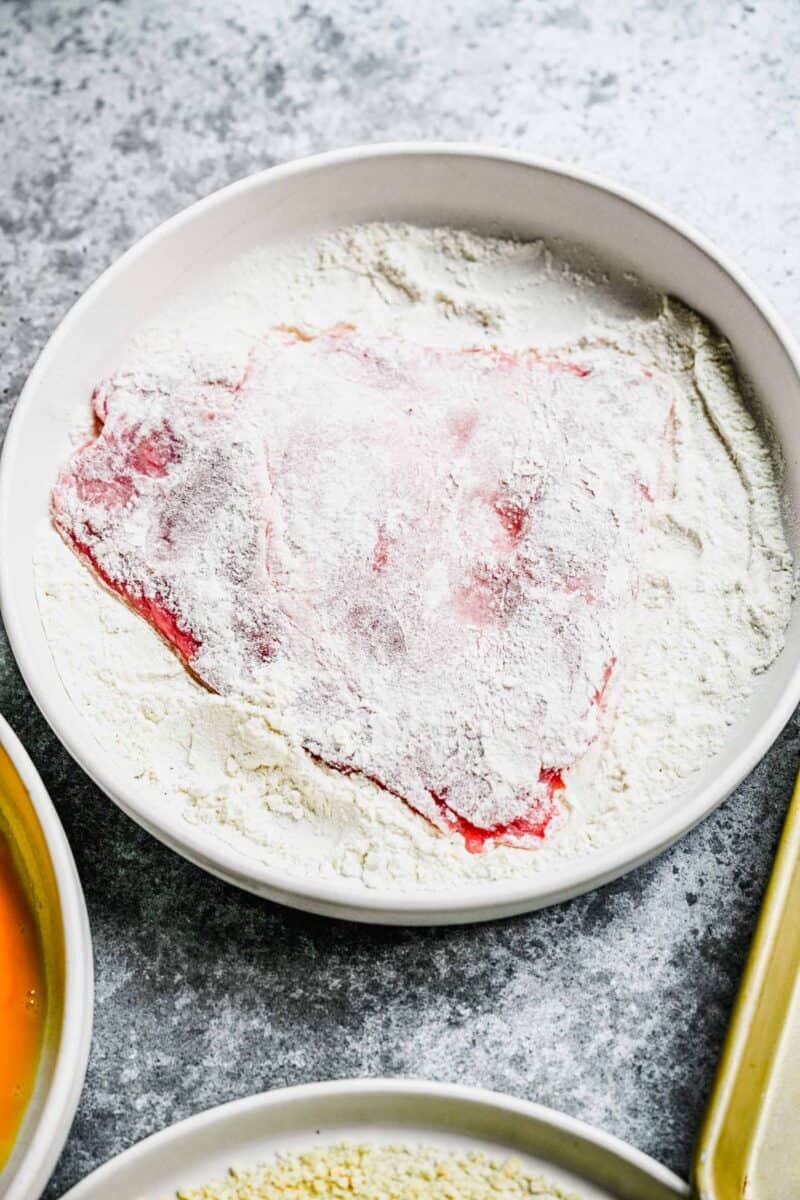
- Season the flour. Combine the flour, salt, and pepper in a bowl and mix.
- Beat the eggs. Crack the eggs into a shallow bowl and beat them until they are well mixed, kind of as if you were making scrambled eggs.
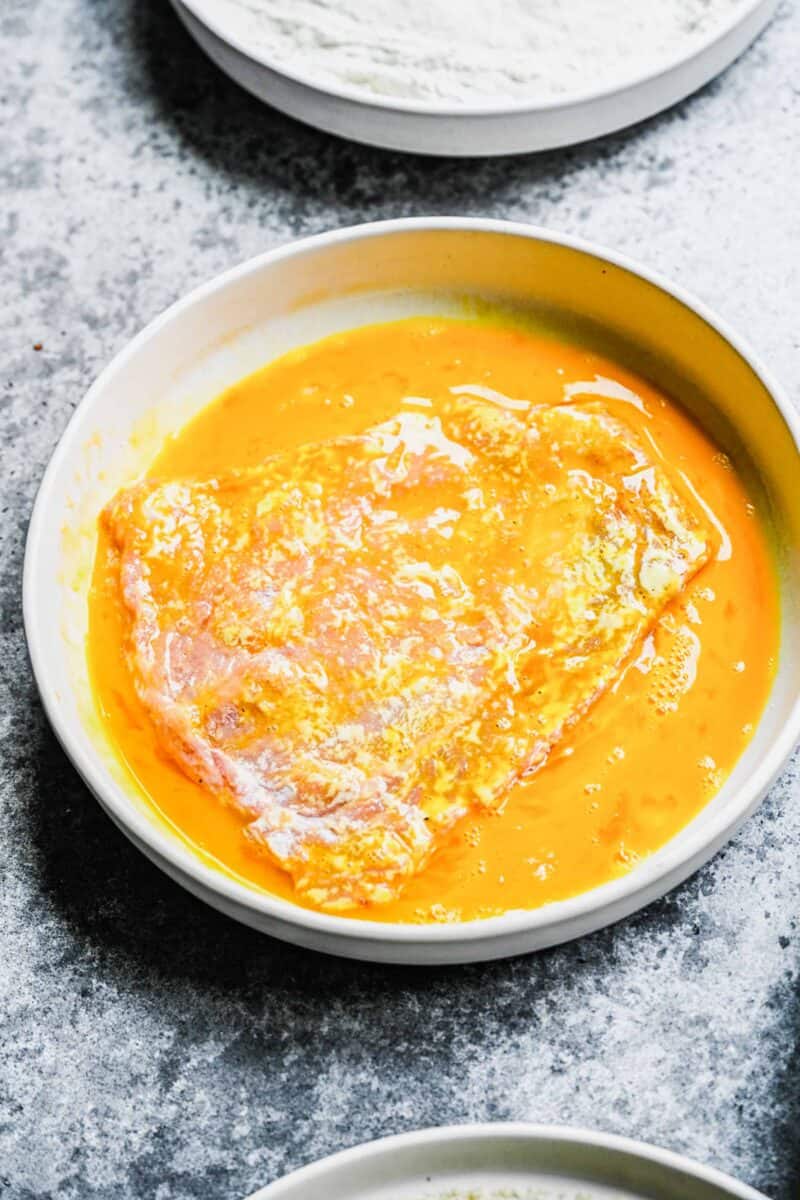
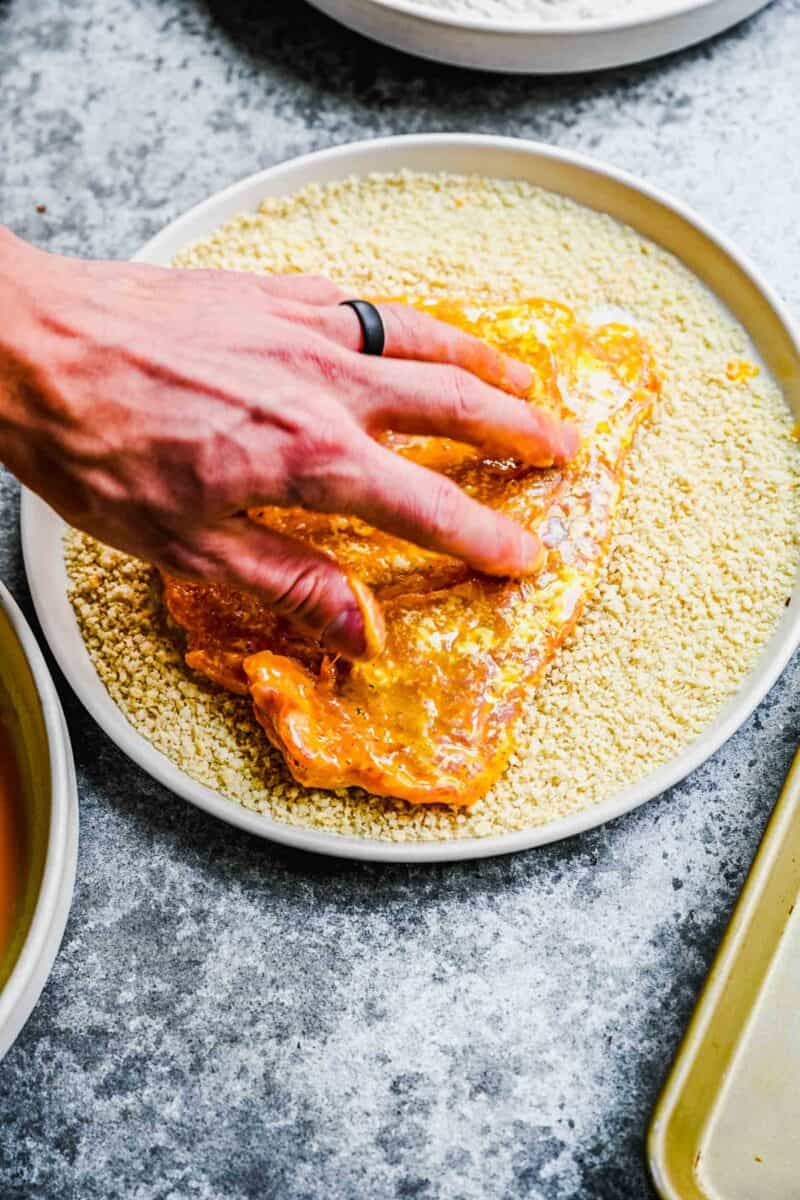
- Line up your ingredients. Pour the panko into a shallow dish. Place your panko dish in a line with your other ingredients. You should have the flour, the eggs, and the panko in that order.
- Heat the oil. Use just enough oil to cover the bottom of a heavy skillet. Heat the oil to medium high.
- Prepare the pork one piece at a time. Take a piece of pork, dip it in the flour mixture, coat both sides, and then do the same with the eggs and the panko. Shake off any excess panko.
- Fry the pork. Add the pork to the prepped pan, cooking it for about 3-4 minutes on either side until it is golden brown. Remove the pork piece and any panko that stayed in the pan before repeating the frying process with the remaining pork.
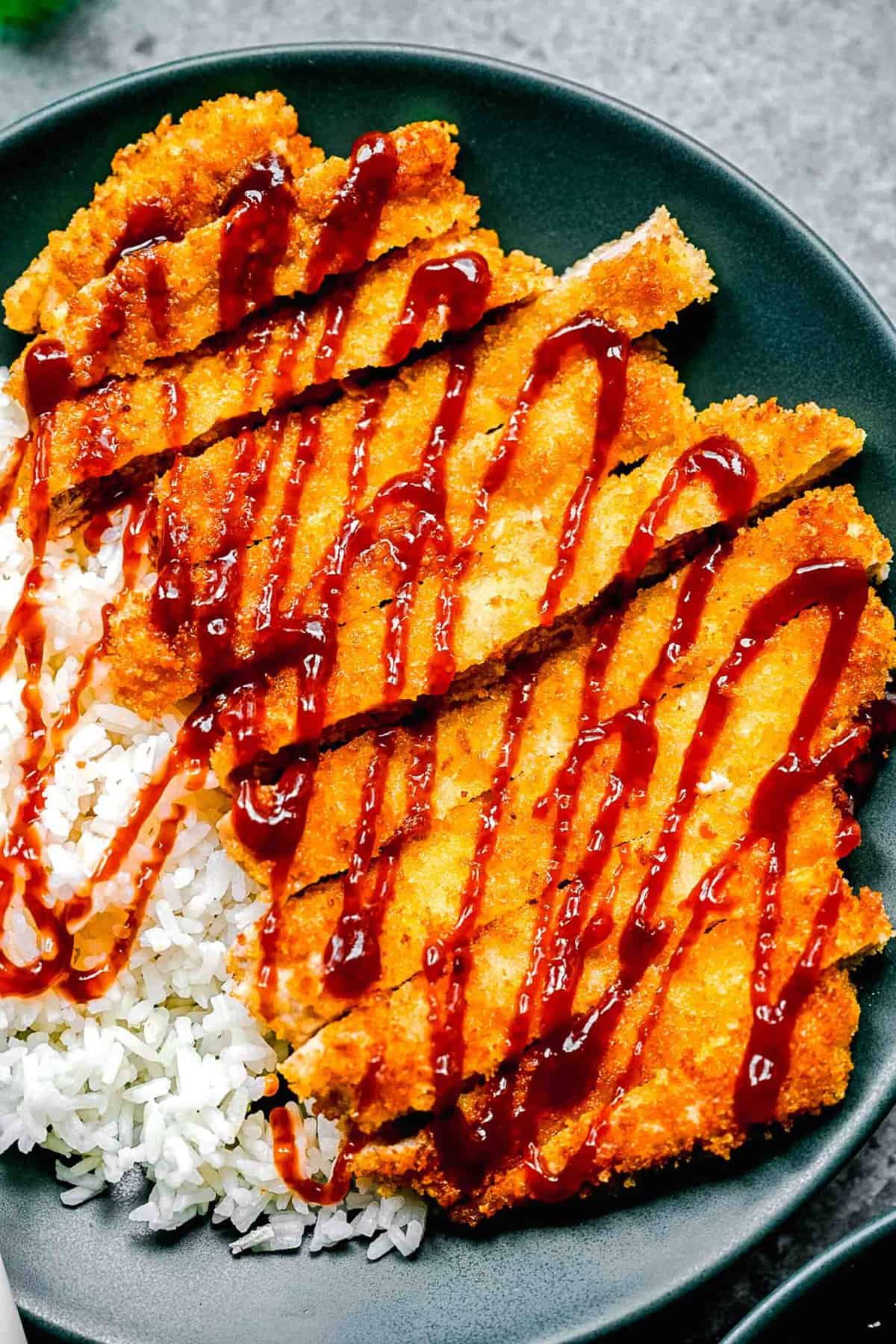
Tips for Success
This is a relatively simple recipe but, as with anything, there are some tips and tricks that will set you up for the best pork katsu possible:
- Choose the right pork. It is important to choose a tender, boneless cut of pork with very little fat.
- Use the two hand technique. The process of breading meat can be a bit messy. The eggs, flour, and Panko have a habit of clumping together on your hands. To avoid this, I suggest using one hand to dredge the pork in flour and then using the other hand to coat it in eggs and then Panko before switching back to the first hand to transfer the now breaded pork to the pan.
- Don’t skip pounding the pork. Pounding the pork thins it out. Thinner cuts of meat cook more quickly. You want the pork to spend as little time in the pan as possible as it tends to get tougher the longer it cooks. Thinner meat will allow for shorter cook time which produces juicier, more tender pork.
- Aim for even thickness. In order to ensure the pork pieces cook at the same speed, it is important to pound them with the goal of uniform thickness in mind.
- Get the oil temperature right. Oil temperature is very important here. Oil that is too hot will burn the breadcrumbs and oil that is not hot enough will leave you with soggy, greasy katsu. At the start, and between every round of frying, check your oil by sprinkling a bit of water in the pan. If it sizzles, you are good to go, if it doesn’t, you need to heat the oil for a bit longer. If you see smoke at any point, turn the heat down and add a tad more oil.
- Work in batches. If you add all of your pork at once, the oil in the pan will cool down, making it so that the pork will not fry properly and will, instead, become soggy and oily. Working with one or two pieces at a time (depending on the size of your pan) will allow you the opportunity to bring the oil back up to temperature between batches.
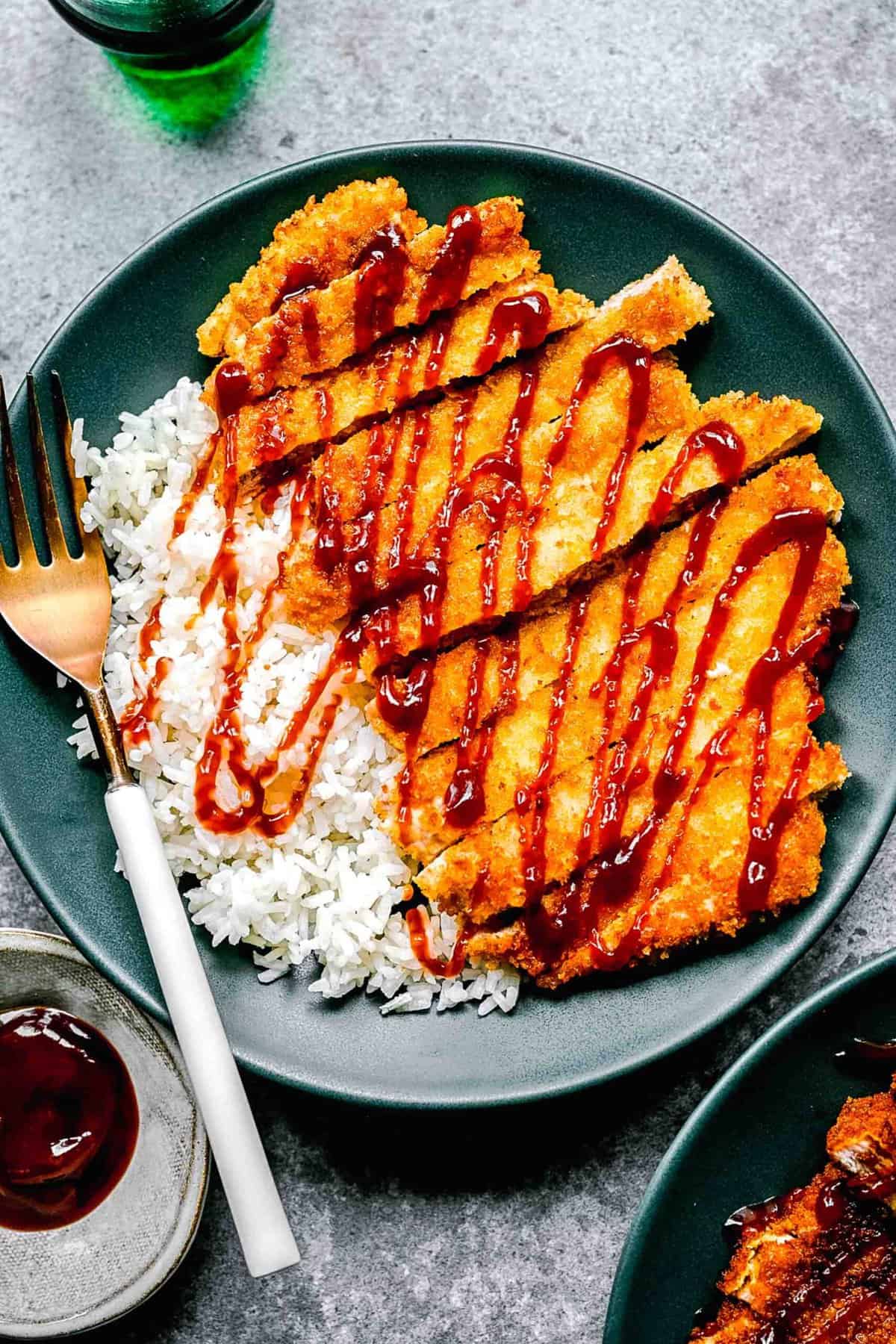
What Goes With Tonkatsu?
Tonkatsu is traditionally served over steamed white rice and topped with katsu sauce, a sweet and savory concoction typically made from Worcestershire sauce, ketchup, and soy sauce. There are plenty of other side dishes that complement katsu nicely, though!
- Lemon wedges. Some fresh, zesty lemon juice adds extra tanginess to your tonkatsu!
- Soup. Miso soup is a great side for this meal because it comes together in just 15 minutes, but it’s super flavorful!
- Veggies. You could make steamed broccoli, shredded cabbage, Japanese pickled vegetables (tsukemono), etc.
How to Store & Reheat Leftovers
Pork katsu is best eaten fresh out of the pan due to the fact that the pork lets off moisture within its breading after being cooked. This means that the longer katsu sits, the soggier it gets.
- To store. If you must store this delicious entree, allow it to cool to room temperature before sealing it in an airtight container, such as a zip lock bag or tupperware. You can keep it in the refrigerator for up to 3 days.
- To reheat. When reheating, lay the pieces on a baking sheet and bake for 6-7 minutes at 375F. You can also use the microwave, but this will take away the crunch.
Can I Freeze Pork Tonkatsu?
You can! Allow the finished product to cool to room temperature, seal it in an airtight container, and store it in the freezer for up to 3 months. Allow the pork katsu to thaw in the refrigerator overnight before reheating.
More Easy Pork Recipes
Speaking of pork, there are some terrific ways to prepare this versatile meat. Check out some of my favorites:

Pork Katsu
Ingredients
- 1 pound (454 g) boneless pork loin, cut into 4 portions
- ½ cup (63 g) all purpose flour
- A couple pinches of kosher salt
- Ground black pepper
- 2 eggs
- ⅔ cup (40 g) Panko breadcrumbs
- Vegetable oil
Instructions
- In a plastic bag, pound your pork to a thin filet, one at a time, with the flat end of a meat tenderizer. If you're using thin sliced, you may not have to do this step as it's already thin enough. Make sure to have padding underneath your plastic bag so you don't break your countertops!1 pound (454 g) boneless pork loin
- In a shallow dish, add in flour, salt, and pepper. Mix around.½ cup (63 g) all purpose flour, A couple pinches of kosher salt, Ground black pepper
- In another shallow dish, beat 2 eggs.2 eggs
- In yet another shallow dish, put your panko in.⅔ cup (40 g) Panko breadcrumbs
- Assemble the shallow dishes in the following order: flour, eggs, panko.
- In a skillet, turn the heat on medium high and add a thin layer of vegetable oil to the pan, just enough to coat the bottom of the pan.Vegetable oil
- Take one of your pork pieces, dredge it in flour on both sides, then egg, then cover it in panko and shake off any excess.
- Test the oil to see if it's hot by flicking some water in it. If it sizzles, you're good.
- With tongs, put your breaded pork in and cook on each side for about 3-4 minutes or until it's brown (don't burn it).
- It shouldn't take long for the pork to cook all the way through since they've been pounded out so thin.
- Before you start on another filet, I would clear out the skillet of straggling panko crumbs. Just take a spatula and scrape them out. They'll burn if you keep them in there for your other filets and your house will smell like disaster :)
- Repeat until all your pork pieces are cooked, slice into length-long pieces and serve with white rice. Don't forget to top with katsu sauce!
Notes
- To store. If you must store this delicious entree, allow it to cool to room temperature before sealing it in an airtight container, such as a zip lock bag or tupperware. You can keep it in the refrigerator for up to 3 days.
- To reheat. When reheating, lay the pieces on a baking sheet and bake for 6-7 minutes at 375F. You can also use the microwave, but this will take away the crunch.
- To freeze. Allow the finished product to cool to room temperature, seal it in an airtight container, and store it in the freezer for up to 3 months. Allow the pork katsu to thaw in the refrigerator overnight before reheating.

